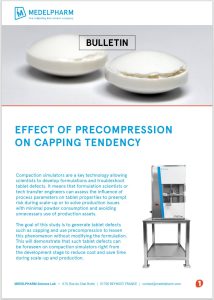Effect of Precompression on Capping Tendency
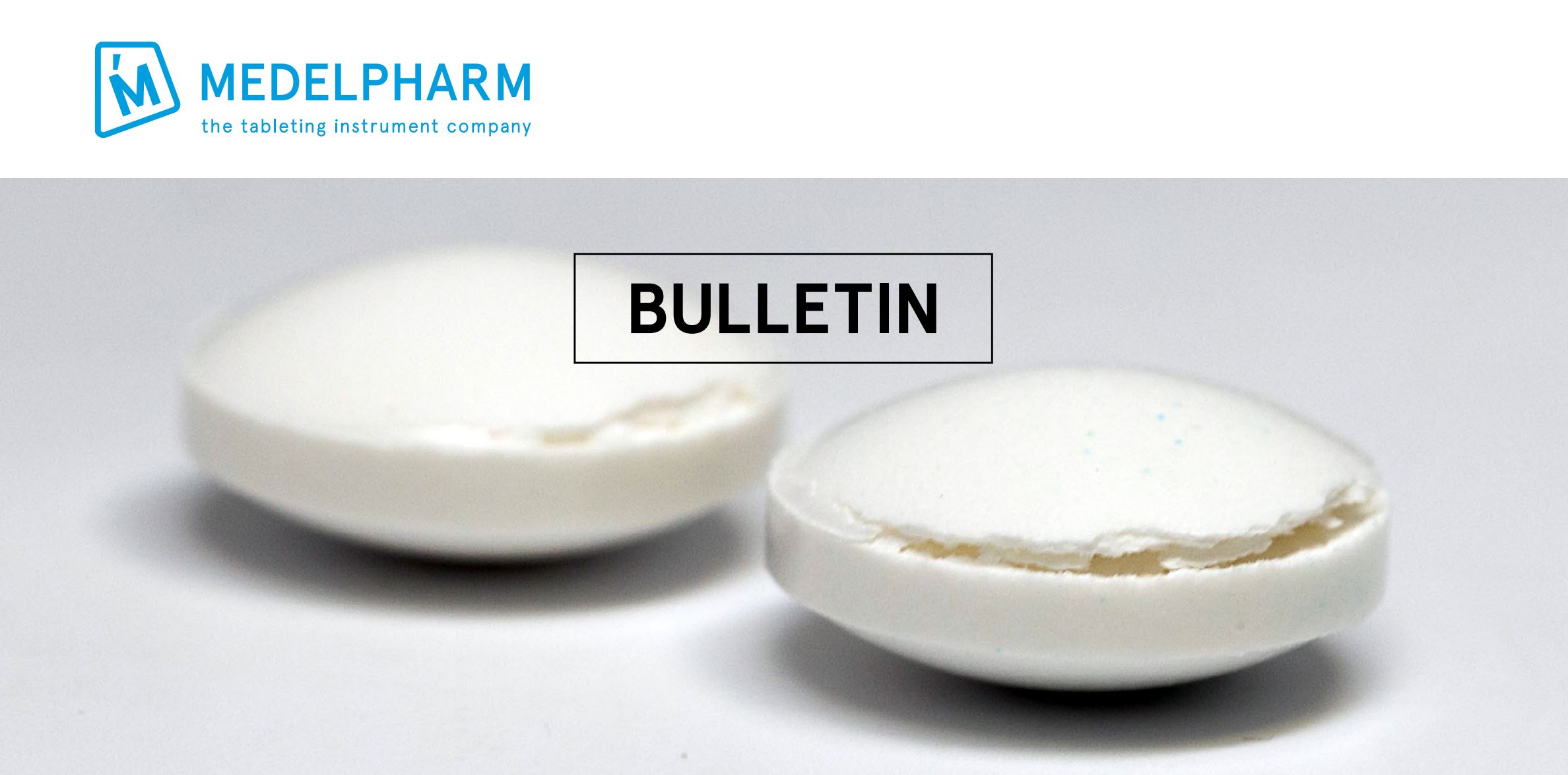
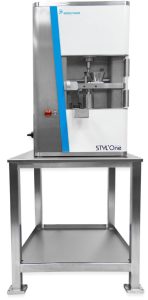
Compaction simulators are a key technology allowing scientists to develop formulations and troubleshoot tablet defects. It means that formulation scientists or tech transfer engineers can assess the influence of process parameters on tablet properties to preempt risk during scale-up or to solve production issues with minimal powder consumption and avoiding unnecessary use of production assets.
The goal of this study is to generate tablet defects such as capping and use precompression to lessen this phenomenon without modifying the formulation. This will demonstrate that such tablet defects can be foreseen on compaction simulators right from the development stage to reduce cost and save time during scale-up and production.
For reminder, tablet fracture at ejection is a common industrial issue. In particular, capping is a common defect on tablets and corresponds to the failure of the tablet’s cup. It can appear on one or both sides of the tablet. This defect can be induced by several causes such as insufficient air escape during tablet compression, high compression speed, excessive elastic recovery or unreasonable die wall pressure. The mechanism at the origin of capping is often not well understood.
Nevertheless, it is well known that the use of tapered dies, lower compression speed or plastic excipients will influence final tablet quality attributes and might be a proper solution to solve capping. However, those responses to capping will have an impact on tooling cost, production yield and regulatory validation. The addition of precompression might be the easiest and most cost-effective solution for your process
The small rotary profile with pre and main compression
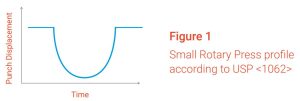
The Small Rotary Press compression profile on STYL’One Nano makes it possible to mimic the kinematic behavior of an R&D rotary press with pre and main compression.

Scientists can then assess the influence of compression process parameters on tablet quality attributes. For instance, higher compression speed will impact compression time including dwelltime, but also relaxation time and ejection time which might influence tablet hardness, disintegration, or dissolution.
Reduce capping with the use of precompression
For this study, a formulation of 78% dibasic calcium phosphate, 20% maize starch and 2% magnesium stearate was prepared. According to Barbara Fretter and al., this formulation shows capping at high tableting speeds.

A four-point manufacturability profile was built from 5kN to 23 kN with the STYL’One Nano compaction simulator at 70 rpm and mounted with Eu D9 R12 round tooling. A repeat was performed with 20% and 50% precompression to assess its effect on capping.
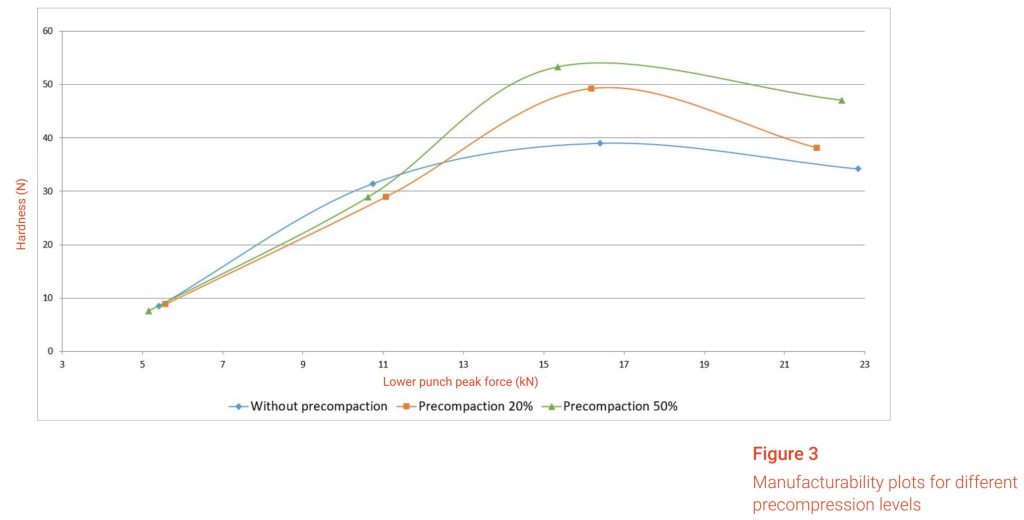
For all trial conditions, a plateau was achieved at a compression force of 16 kN, followed by a loss of hardness. Without precompression, achieving the 40N-targeted hardness was not possible because capping was obtained on 80% of tablets. With precompression, the targeted hardness was reached before the plateau, lowering the risk for capping.
See the full MEDELPHARM bulletin “Effect of Precompression on Capping Tendency” here:
(click the picture to download the brochure)
Source: MEDELPHARM bulletin “Effect of Precompression on Capping Tendency”
Do you need some details or more information? Just fill in the contact form:


